HANK HOGAN, CONTRIBUTING EDITOR
Commercial fishing operations face a number of challenges: the weather, fluctuating product prices, and an unpredictable daily catch. Added to these is the need to figure out exactly what’s been caught. This information can have a big impact on the bottom line, since different species of fish command very different prices and therefore bring in vastly different revenue. A 3D vision-based system called TUNASCAN provides identification data about fish species to maximize revenue.
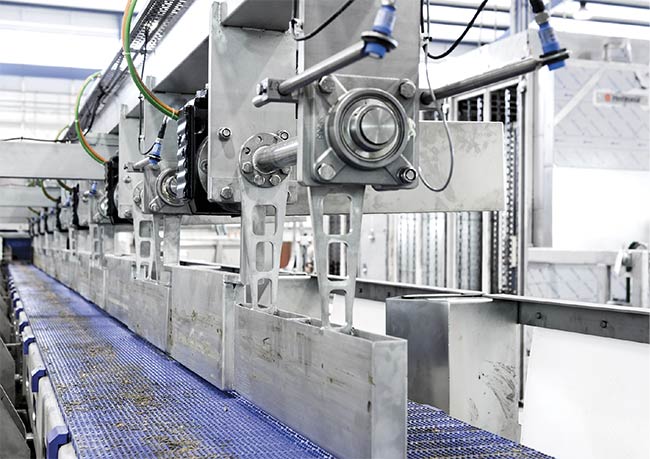
A scanning system for fish classification. Courtesy of Matrox Imaging/Marexi Marine Technology.
Tuna species range from skipjack — the kind found in grocery stores in five-ounce cans that sell for a couple of dollars each — to bluefin, which retails for $40 a pound and sometimes much more. Albacore, yellowfin, and bigeye — the other widely consumed types — all fall somewhere in between these two price extremes.
But manually differentiating between these species is difficult, said Pau Sánchez Carratalá, a computer vision engineer with Vigo, Spain-based Marexi Marine Technology.
In standard commercial fishing operations, fish are caught in nets, brought aboard a ship, and then quickly frozen. Typically, manual inspection and
assessment follow.
“Some species, like skipjack, can be recognized by visual inspection when they are frozen, but in some cases, like distinguishing between yellowfin and bigeye, visual inspection becomes less accurate, and some testing is required,” Sánchez Carratalá said.
This manual approach also has problems determining the species of smaller fish, or those under 10 kg (22 lbs). Since most fish caught today fall under this weight threshold, a large percentage of fish are sold unlabeled, without a species classification. Consequently, revenue is lost.
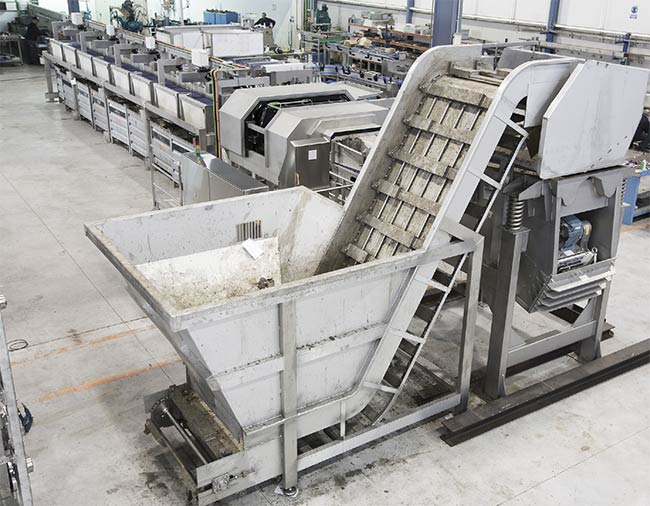
A reception hopper, which feeds frozen fish one at a time into a fish classification system. Courtesy of Matrox Imaging/Marexi Marine Technology.
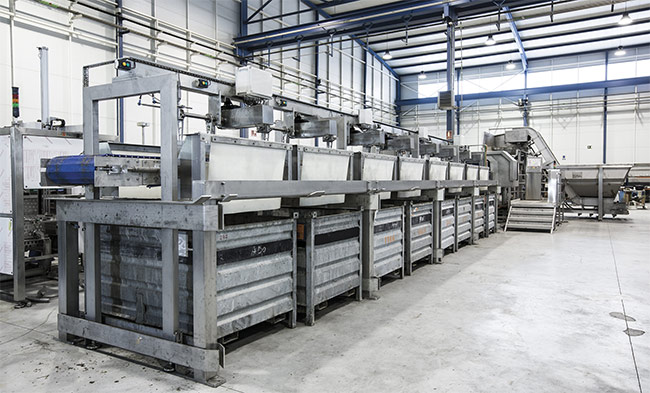
After classification, the system sorts fish into containers based on species, size, and quality. Courtesy of Matrox Imaging/Marexi Marine Technology.
Marexi began working with a fishing operation several years ago to develop a better way to classify the species, size, and quality of frozen fish. The company’s TUNASCAN vision system incorporates a traditional 3D profilometer to map out a frozen fish in three dimensions as it moves past an inspection point. The system’s designers and engineers then opted to take advantage of vision innovations and switched to the dual-camera, single-laser Matrox AltiZ sensors and the Matrox Imaging Library MIL X software toolkit. These products made the entire system more robust while improving accuracy and speed, according to Sánchez Carratalá.
The system has two sensors mounted directly opposite each other to provide different vantages.
“Because of the configuration of the two units, the scanning produces a single point cloud representation of the scene while minimizing reproduction errors or occlusions,” said Mathieu Larouche, product manager for 3D sensors at Matrox Imaging. “[It] allows the team to obtain as much 3D data
as possible of the frozen fish. The 3D processing tools in MIL X operate on and in between the generated point cloud.”
Using this data and other information, and after training, machine learning software distinguishes between the various species. The sorting process begins with frozen fish going into a reception hopper, which feeds the
fish one by one into the TUNASCAN system, where they travel past a scanning point. After the system classifies the fish, it sorts them into containers based on species and other characteristics. TUNASCAN achieves an
accuracy rate of 95% while handling up to 20 tons of product per hour.
Because TUNASCAN is an automated industrial machine that works at high speeds, it requires permits and safety systems to protect operators. Since it works with food, every component that comes in contact with the product has to be certified for food safety. This applies to actuators, conveyor belts, and anything else that may touch the tuna, Sánchez Carratalá said. Thus, a vision-based remote scanning approach brings a benefit by eliminating some of the contact.
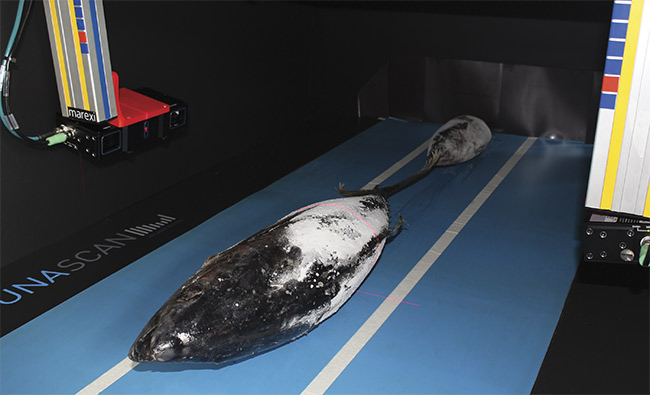
A frozen fish moves past 3D cameras (left and right). Courtesy of Matrox Imaging/Marexi Marine Technology.
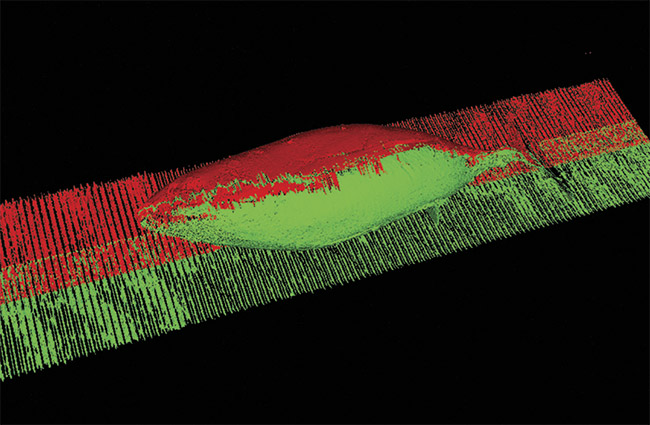
A 3D point cloud of a fish was generated by the two cameras, enabling classification. Courtesy of Matrox Imaging/Marexi Marine Technology.
The automated system makes it possible to label each tuna with its proper species, he said, which ensures that the tuna can be sold at a higher price than it would get if classified as generic. The amount of time that the system takes to classify and process the fish is a fraction of that needed for manual inspection. This time savings is particularly important when dealing with
frozen food, which must be kept cold
to ensure consumer safety. After
classification, the fish are rapidly returned to a freezer, helping to control product temperature and maintain the cold chain.
Now that TUNASCAN has been proven to work in actual operation, it is available as a product. Marexi is also
investigating other vision-based solutions that could benefit its customers.
“We are always looking to optimize our applications to improve our products and increase their performance,” Sánchez Carratalá said.